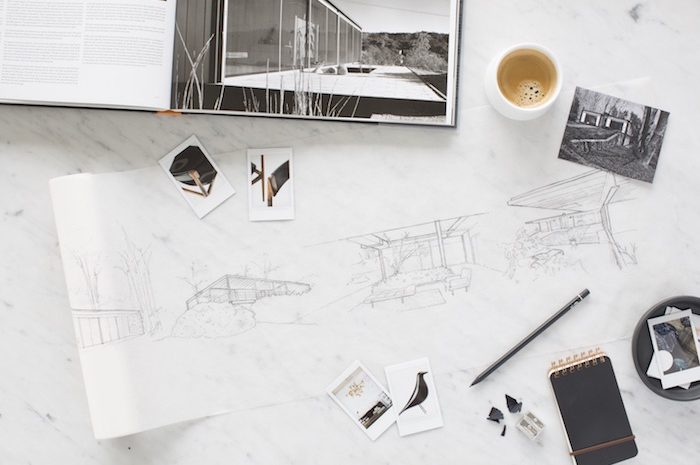WantedDesign is a dynamic connector and amplifier for global design, fostering creative synergy and serving as a pivotal crossroad for the international design community across Latin America, North America, and Europe.
Q&A with Gabriela Ravassa of Lixil and DXV

Q&A with Gabriela Ravassa of Lixil and DXV
LIXIL was a sponsor for the #DMMTalks by Design Milk and Modenus during WantedDesign 2018. To get a greater insight into the brands, designs and inspiration, we want to share a Q&A with Gabriela Ravassa, Senior Industrial Designer at LIXIL Americas and Lead Designer for DXV.
DXV is a portfolio of luxury bath and kitchen products that reimagines the most influential design movements during the past 150 years: Classic (1890-1920), Golden Era (1920-1950), Modern (1950-1990), and Contemporary (1990-Present). The brand has been recognized with more than 15 product innovation and design awards in the past four years. DXV is part of LIXIL, a global leader in housing and building materials products and services.
WD: How would you describe what the DXV brand represents?
At DXV, our vision of luxurious design, sophistication, and elegance is shaped by the most timeless yet distinctive design movements of the past 150 years. Taking cues and inspiration from these eras, we challenge ourselves to reimagine them while elevating the experience of everyday living. Every piece in our DXV portfolio is handcrafted with the promise of enduring quality and timeless design.
WD: What is the overarching approach that guides the design team for DXV products?
We always start by understanding our customers’ needs and desires. We recognize their appreciation for premium quality, fine craftsmanship, unique materials, and well-designed products. This means taking a human-centric approach in new product creation. We interpret how users will interact with and experience our products to ultimately make their lives more beautiful, enjoyable, and healthier.
WD: How does the team successfully execute on this mission?
For every new bath and kitchen suite, we spend a lot of time learning about the period movement. And we don’t just read about it – we fully immerse ourselves in it. We tour iconic buildings, visit museums, sift through archives, and research plumbing fixtures designed during each period. To ensure that we maintain the integrity of the movement, every detail, proportion and design decision is carefully considered during the process. We also spend time observing and listening to the consumers to understand what would make their lives easier and more satisfying. This comprehensive process helps us achieve the right balance between form and function.

WD: As an individual contributor, what inspires you in creating new product designs?
With our studio in one of the most inspiring cities in the world, all I have to do is walk the streets of New York City. I can find creative ideas on every street corner. I have my go-to museums, streets, fashion brands, restaurants, and stores, where I know I’ll be spurred with new design concepts. I tend to gravitate toward architecture, particularly its details and interiors. There are such iconic art deco buildings here that provide tremendous inspiration with their use of mixed materials, intricate detailing and breathtaking facades.
WD: Is there an element of the design process that you find intriguing?
I love finding a balance and harmony between the iconic movement I’m exploring and my reinterpretation of it. I strive to create high quality arrangements that include the latest technology and different materials, while also staying true to the specific design movement. This can be accomplished through material choice, manufacturing processes, design details, or design philosophy. I enjoy the challenge of constantly thinking about what our consumers need and want today, while incorporating elements from the past.

WD: Can you share an example of how you’ve been inspired by a specific iconic designer?
When working on the DXV Modulus bathroom suite, I found inspiration in architect Philip Johnson’s body of work, which includes both modernistic and postmodernism design. The modern design movement – with its clean, simple lines and goal of preeminent functionality – was the basis for DXV Modulus. Becoming immersed in Johnson’s work encouraged me to explore the use of different materials and finishes. We incorporated concrete for lavatories, wood and leather for vanities, and jewelry accents on faucets. Ideas like these come from various sources, but Johnson is one architect whom I particularly admired when working on this portfolio.

WD: What projects have been particularly gratifying in your work with the DXV brand?
It was thrilling to be part of the design team that created the first 3D printed metal faucets. Our goal was to design something that could not be made with traditional manufacturing. Our team went through a breadth of potential styles, renditions, and testing. We use direct metal laser sintering to print layer upon layer of metal alloy powder and turn it into a conduit that transports water to the user. It is truly remarkable. Another especially rewarding project was developing the new DXV Modulus bath suite. We designed a comprehensive range with clean, modern lines and functional sensibilities. At the same time, we highlighted craftsmanship and refinement with high-end luxury materials and features that appeal to the contemporary consumer.


